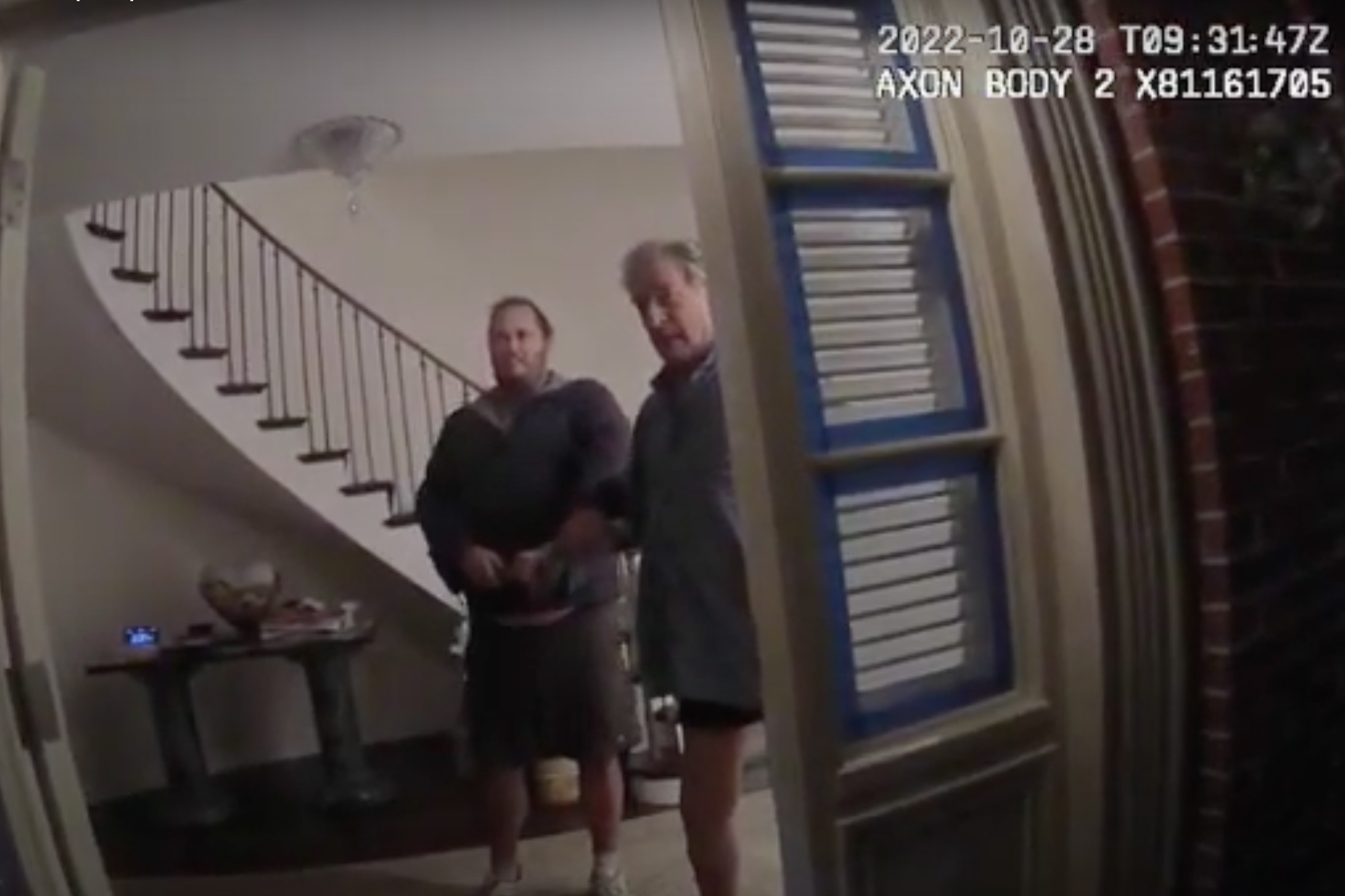The release of police body camera footage has thrust the hammer attack on Paul Pelosi back into the limelight.
It’s gruesome viewing: Shortly after police tell alleged assailant David DePape to “drop the hammer” he is struggling with Pelosi over, he takes a swing at Nancy Pelosi’s husband.
A coalition of news organizations sued for the footage’s release, arguing that it was in the public interest. But experts on disinformation and political extremism say this kind of video can be dangerous in a country seeing an upswing in right-wing extremism and conspiracy theories.
They are concerned.
While access to this kind of footage is a “net good for transparency,” journalists need to handle it responsibly, said Jonathan Lewis, a research fellow at George Washington University’s Program on Extremism.
“It’s paramount that news organizations and reporters do not simply amplify this type of content,” he said.
He’s not speaking theoretically.
In the wake of the October 2022 attack at the Pelosi home, conspiracy theories proliferated in right-wing online spaces. Amongst other things, people suggested that Pelosi and DePape had a sexual relationship, that the attack was a false flag, and that DePape could not have been radicalized by right-wing conspiracy theories because he was from the progressive enclave of Berkeley and had been previously in a relationship with an infamous nudist activist.
Prominent mainstream figures—Elon Musk, Donald Trump Jr. and even Texas Sen. Ted Cruz—all joined into the fray.
The conventional wisdom holds that more factual information can help disprove false information. But it doesn’t always play out that way.
“You’re already seeing the rapid dissemination of this video, in right-wing ecosystems and conspiratorially minded channels, promoting many of the same conspiracies,” Lewis said.
Why Can’t We See It on the Video?
Sara Aniano, a disinformation researcher at the Anti-Defamation League, says she is seeing online conspiracy theorists trying to pick apart the video: If it was reported that the attack left Pelosi lying in a pool of his own blood, why can’t we see it on the video? Why is Pelosi holding a drinking glass in the footage? Why is he in his underwear?
“This shouldn’t be surprising to people who are familiar with conspiracy theorists,” Aniano said. “A lot of people aren’t really convinced by visual evidence.”
This is a feature of conspiracy theories, not a bug, says Abner Hauge, the chief editor of Left Coast Right Watch, an investigative news site that reports on right-wing extremism.
“Conspiracy theories don’t rely on facts, they weaponize them,” he told The Standard. “The idea of a conspiracy theory is you have an endpoint you want to go to and you construct reality around that.”
This was one of the reasons that Adam Lipson, the public defender representing DePape, opposed the release of the video.
“Releasing this footage is disrespectful to Mr. Pelosi, and serves no purpose except to feed the public desire for spectacle and violence,” Lipson said in a statement. “The footage is inflammatory and could feed unfounded theories about this case, and we are extremely concerned about Mr. DePape’s ability to get a fair trial.”
So what are reporters to do? Experts on extremism say that, while it is legitimate for journalists to report on the footage, carefully crafting the coverage is key.
For example, reporters can choose not to publish the full video, instead using just a clip or a series of stills to offer readers a visual understanding of the attack, the extremism researcher Lewis said. Or they can simply view the footage themselves and describe it in their reporting.
Lewis stressed that the video won’t change the minds of true believers, but it will become a meme for right-wing extremists—and that can have deadly consequences.
“Will this be the catalyst?” Lewis asked. “Will this inspire someone else who is considering engaging in an act of political violence”
More broadly, media need to understand how this type of footage will be weaponized by extremists and calibrate their coverage to avoid that, Hauge said. But building that kind of institutional knowledge takes resources that most news media don’t have today.
Barring that, he believes news outlets should agree amongst themselves not to sensationalize the story.
Many aren’t doing that. Hauge described one story that featured a sensationalist headline and included a “flattering photograph” of DePape.
“It’s like they made him a press kit,” Hauge said. “Don’t hand him a public relations win on a silver platter.”
